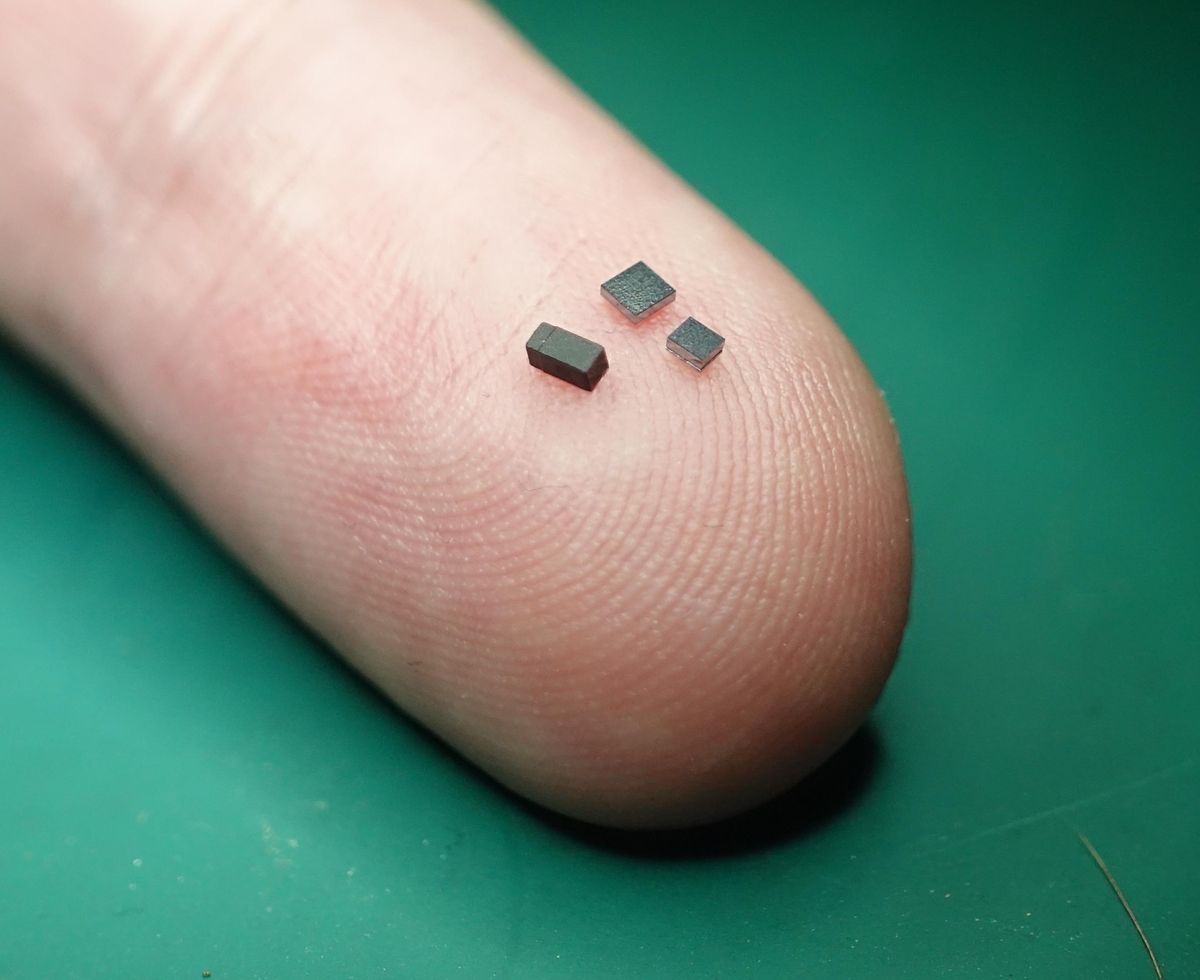In the late 1980s, Rod Brooks and Anita Flynn published a paper in The Journal of the British Interplanetary Society with the amazing title of Fast, Cheap, and Out of Control: A Robotic Invasion of the Solar System. The paper explored the idea that instead of sending one big and complicated and extremely expensive robot to explore (say) the surface of Mars, you could instead send a whole bunch of little and simple and extremely cheap robots, while still accomplishing mission goals. The abstract of the paper concludes: “We suggest that within a few years it will be possible at modest cost to invade a planet with millions of tiny robots.”
That was 1989, and we’re still nowhere near millions of tiny robots. Some things are just really hard to scale down, and building robots that are the size of bees or flies or even gnats requires advances in (among other things) sensing for autonomy as well as appropriate power systems. But progress is being made, and Sawyer Fuller, assistant professor at the University of Washington (who knows a thing or four about insect-scale flying robots), has a new article in Science Robotics that shows how it’s possible to put together the necessary sensing hardware to enable stable, autonomous flight for flying robots smaller than a grain of rice.
For a tiny flying robot to be autonomous (or for any flying robot to be autonomous, really) it needs to be able to maintain its own stability, using sensors to keep track of where it is and make sure that it doesn’t go anywhere that it doesn’t want to go. This is especially tricky for small-scale flying robots, because they can be pushed around by air currents or turbulence that larger robots can simply ignore. But it turns out that being tiny also has some advantages: Because the drag of the air itself becomes more dominant the smaller an aircraft gets, an onboard gyroscope becomes irrelevant, and you just need an accelerometer. Tie that to an optic flow camera to track motion, along with a microcontroller to do the computation, and you have everything you need.

The camera in the picture above is, somewhat incredibly, available off the shelf. It’s designed primarily to explore your insides, which is why the entire camera is only 0.65 millimeters tall and wide, 1.2 mm long, and weighs 1 milligram (including its multi-element lens). The sensor on this particular camera exceeds the power budget that the researchers are targeting, probably because its intended use case does not involve tiny robots with tinier batteries, but there are existing sensors of a similar size that would work.
In total, this hardware weighs 6.2 mg and uses 167 microwatts of power, which in theory could be suitable for a 10-mg flying robot, something about the size of a chonky gnat. Figuring out whether it all actually works in practice isn’t easy, since chonky robotic gnats don’t exist, so the researchers instead used a palm-size drone running simulated sensors. Testing showed that the system was able to successfully estimate the attitude of the drone and also detect and reject disturbances from wind. In fact, its performance was comparable to that of an actual fruit fly, which is impressive considering how long the fruit fly has had to refine its design.
“Reducing drone size down to gnat scale only amplifies many of the benefits of insect scale,” Fuller says, “such as greater potential to harvest all needed energy from the environment and larger deployments.” Much like Brooks and Flynn’s vision for swarms of inexpensive robots, Fuller sees the kind of gnat-size robots that these sensors will help enable as a completely new approach to autonomous exploration. “Small flying robotic insects will revolutionize low-altitude atmospheric ‘air telemetry’—remote sensing of air composition and flow—by doing so on a much more detailed and persistent basis than is possible now. They will power themselves from the sun or indoor lighting—which favors small scale. The chemical sensor might be an insect antenna, which my group demonstrated in the ‘smellicopter.’ Applications include early detection of forest fires, pest onset in agriculture, buried explosives, or mapping hazardous volatiles to find leaks of greenhouse gases or the spread of airborne diseases.”
And if you find the whole “fast, cheap, and out of control” thing compelling and want to watch a very strange movie of the same name from 1997 featuring Rod Brooks, a lion tamer, a topiary artist, and a naked mole-rat expert, here you go.
- Solar-Powered RoboBee X-Wing Flies Untethered ›
- Harvard RoboBees Learn to Steer, Mostly ›
- Harvard's Robot Bee Is Now Also a Submarine ›
- For Micro Robot Insects, Four Wings May Be Better Than Two ›
Evan Ackerman is a senior editor at IEEE Spectrum. Since 2007, he has written over 6,000 articles on robotics and technology. He has a degree in Martian geology and is excellent at playing bagpipes.


